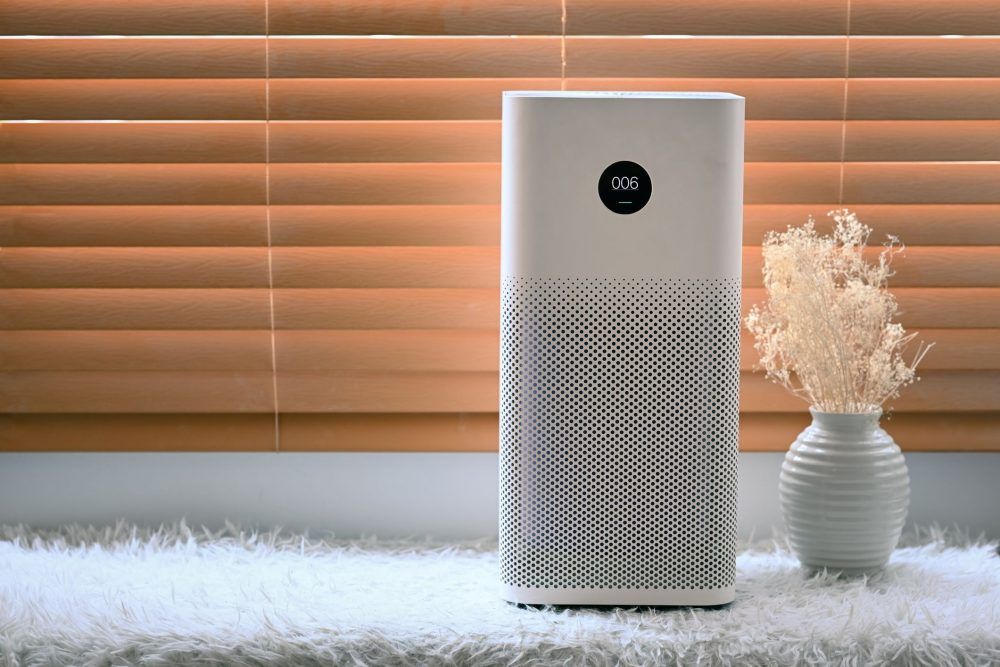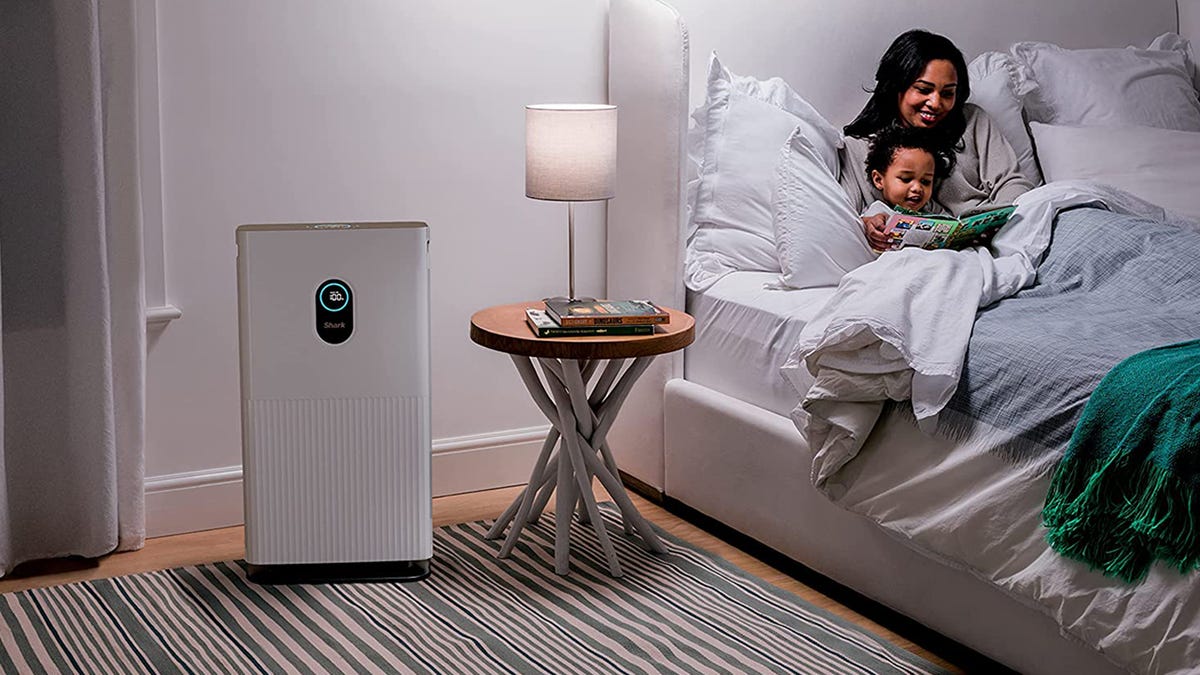Featured
Table of Contents
- – Recognizing Mold and Its Health Consequences
- – Can Air Purifiers Help In Reducing Mold And M...
- – The Science Behind Air Purifiers and Mold And...
- – Are Air Purifiers Right for You When Battling...
- – A Multi-Pronged Method to Dominating Mold
- – Living Mold-Free: Beyond Air Purifiers
- – When to Hire the Specialists
- – Verdict: A Breath of Fresh Air and a Mold-Fre...

Mold and mildew growth in your home can be a real problem. Not just does it develop unattractive black spots and musty smells, but it can also activate allergic reaction signs and respiratory system troubles. Air purifiers are commonly suggested as a service, promising cleaner air and lowered direct exposure to mold and mildew spores. Are air purifiers absolutely worth it in the fight versus mold? This comprehensive overview checks out the science behind mold and mildew, the duty of air purifiers, and the variables to consider when making a decision.
Recognizing Mold and Its Health Consequences
Prior to diving into air cleansers, allow's shed light on mold and its prospective health threats:
- Mold Basics: Mold is a fungi that grows in damp environments. It duplicates by launching spores into the air, which can be breathed in and trigger different health issue.
- Health and wellness Problems: Direct exposure to mold spores can set off allergy symptoms like sneezing, coughing, itchy eyes, and a runny nose. In some situations, mold and mildew direct exposure can additionally cause breathing infections and get worse existing respiratory system conditions like asthma.
- Mold Doesn't Differentiate: While some people are more conscious mold and mildew than others, anybody can experience health issue from long term exposure.
Can Air Purifiers Help In Reducing Mold And Mildew?
Air cleansers can contribute in taking care of mold and mildew, however it is very important to understand their limitations:

- Capturing Spores: Air purifiers with HEPA filters can properly record mold and mildew spores distributing airborne. This can help in reducing direct exposure and possibly minimize allergic reaction signs.
- Restricted Effect On Source: Air cleansers do not get rid of the source of the mold problem. Mold and mildew removal is critical to deal with the source and avoid further development.
- Dampness Control is Secret: Mold flourishes in moist settings. Air cleansers don't resolve dampness concerns. Without addressing the underlying dampness problem, mold will likely return.
The Science Behind Air Purifiers and Mold And Mildew
While air purifiers can not eliminate mold and mildew itself, some research study suggests they can be a valuable device in managing mold direct exposure:
- A 2012 research published in the journal "Structure and Atmosphere" found that air cleansers with HEPA filters significantly reduced airborne mold and mildew spore concentrations in a test setting.
- A 2015 evaluation published in the journal "Current Allergic reaction and Asthma Reports" ended that air purifiers, together with other mold remediation techniques, can be helpful in decreasing mold-related signs and symptoms in sensitive individuals.
Nevertheless, it is essential to note some constraints:
- HEPA Filter Performance: HEPA filters are not 100% reliable at catching all mold and mildew spores, specifically really tiny ones.
- Filter Upkeep: Regularly changing HEPA filters according to the manufacturer's directions is crucial for keeping optimum performance. Clogged up filters lose effectiveness.
Are Air Purifiers Right for You When Battling Mold? Variables to Take Into Consideration
Here are some essential elements to take into consideration when choosing if an air purifier is worth it for your mold and mildew circumstance:
- Extent of Mold And Mildew Development: For tiny mold patches, resolving the moisture resource and eliminating the mold could be adequate. Air cleansers may be much less important. For considerable mold and mildew growth, an air purifier can be a handy enhancement to your removal method.
- Health Problems: If you experience allergy signs or breathing problems suspected to be mold-related, an air purifier can supply some relief and enhance indoor air quality.
- Attending to the Resource: Remember, air purifiers are not a replacement for proper mold and mildew removal. Identifying and resolving the source of dampness that's creating the mold development is important for a long-term solution.
A Multi-Pronged Method to Dominating Mold
While air purifiers can be a handy tool, a thorough method is vital to winning the fight against mold:
- Dampness Control: One of the most vital action is to identify and address the source of wetness that's enabling mold and mildew to grow. This might involve dealing with leaky pipes, boosting air flow in bathrooms and kitchens, or dealing with condensation issues.
- Mold and mildew Removal: Professionals recommend expert mold remediation for substantial mold and mildew growth. They have the expertise and devices to safely remove mold and mildew and prevent further spread. For small mold patches, you might be able to manage elimination yourself, following security guidelines.
- HEPA-Filtered Vacuuming: After mold and mildew remediation, HEPA-filtered vacuuming can assist remove staying mold spores from surface areas.
- Air Purifier Integration: Once the source of the mold is attended to and the mold and mildew itself is eliminated, an air purifier can be a useful tool to record staying airborne spores and improve indoor air top quality.
Living Mold-Free: Beyond Air Purifiers
Below are some added pointers to promote a mold-free setting:
- Maintain Low Indoor Moisture: Purpose for a humidity degree in between 30% and 50% utilizing a dehumidifier in wet environments. This aids stop mold and mildew growth.
- Boost Ventilation: Improve air blood circulation in your home by opening up home windows consistently and using exhaust fans in bathrooms and kitchen areas.
- Clean and Dry Damp Surfaces: Immediately tidy and completely dry any damp surfaces, such as spills or condensation, to stop mold from settling.
- Routinely Evaluate Prone Locations: Pay focus to areas vulnerable to mold growth, like washrooms, basements, and attic rooms. On a regular basis inspect for indicators of mold and mildew and address wetness problems quickly.
- Take Into Consideration Mold-Resistant Products: When restoring or replacing structure materials, think about utilizing mold-resistant choices, particularly in moisture-prone locations.
When to Hire the Specialists
While some mold and mildew remediation jobs can be dealt with by yourself for little mold and mildew spots, there are situations where professional assistance is critical:
- Substantial Mold Development: If you uncover a huge area of mold and mildew development, especially if it covers more than 10 square feet, it's finest to call an expert mold and mildew removal firm. They have the know-how and tools to securely eliminate the mold and prevent additional spread.
- Wellness Issues: If you or your member of the family experience consistent respiratory system issues or allergic reaction signs thought to be mold-related, seeking advice from a healthcare professional and a mold remediation specialist is recommended.
- Surprise Mold and mildew: If you suspect mold and mildew development behind wall surfaces or in crawlspaces, professional aid is essential to situate and remove the mold securely and properly.
Verdict: A Breath of Fresh Air and a Mold-Free Home
Mold and mildew growth in your house can be a worrying problem, yet with the ideal technique, you can win the fight and create a healthier living environment. While air purifiers can be a practical device in handling mold and mildew direct exposure, remember they are not a standalone remedy. By addressing the source of moisture, carrying out proper mold and mildew remediation strategies, and integrating preventative steps, you can take a breath simpler in a mold-free home.
Additional Factors To Consider:
- Air High Quality Screening: For serious mold and mildew troubles or if you have health concerns, take into consideration professional air high quality testing to examine mold spore degrees and assist your remediation efforts.
- Long-Term Surveillance: After effective mold and mildew removal, it's a good idea to monitor your home for signs of reappearance, especially in locations formerly vulnerable to mold growth.
By taking a proactive method and combining these approaches, you can produce a healthy and balanced and mold-free environment on your own and your family.
Table of Contents
- – Recognizing Mold and Its Health Consequences
- – Can Air Purifiers Help In Reducing Mold And M...
- – The Science Behind Air Purifiers and Mold And...
- – Are Air Purifiers Right for You When Battling...
- – A Multi-Pronged Method to Dominating Mold
- – Living Mold-Free: Beyond Air Purifiers
- – When to Hire the Specialists
- – Verdict: A Breath of Fresh Air and a Mold-Fre...
Latest Posts
Understanding the Shift: Why sydney is Phasing Out Gas
What Does Is Dishwashing Yeti Ramblers A Safe Bet? Mean?
Everything about Are Yeti Ramblers Meant To Brave The Dishwasher?
More
Latest Posts
Understanding the Shift: Why sydney is Phasing Out Gas
What Does Is Dishwashing Yeti Ramblers A Safe Bet? Mean?
Everything about Are Yeti Ramblers Meant To Brave The Dishwasher?